Courses taught
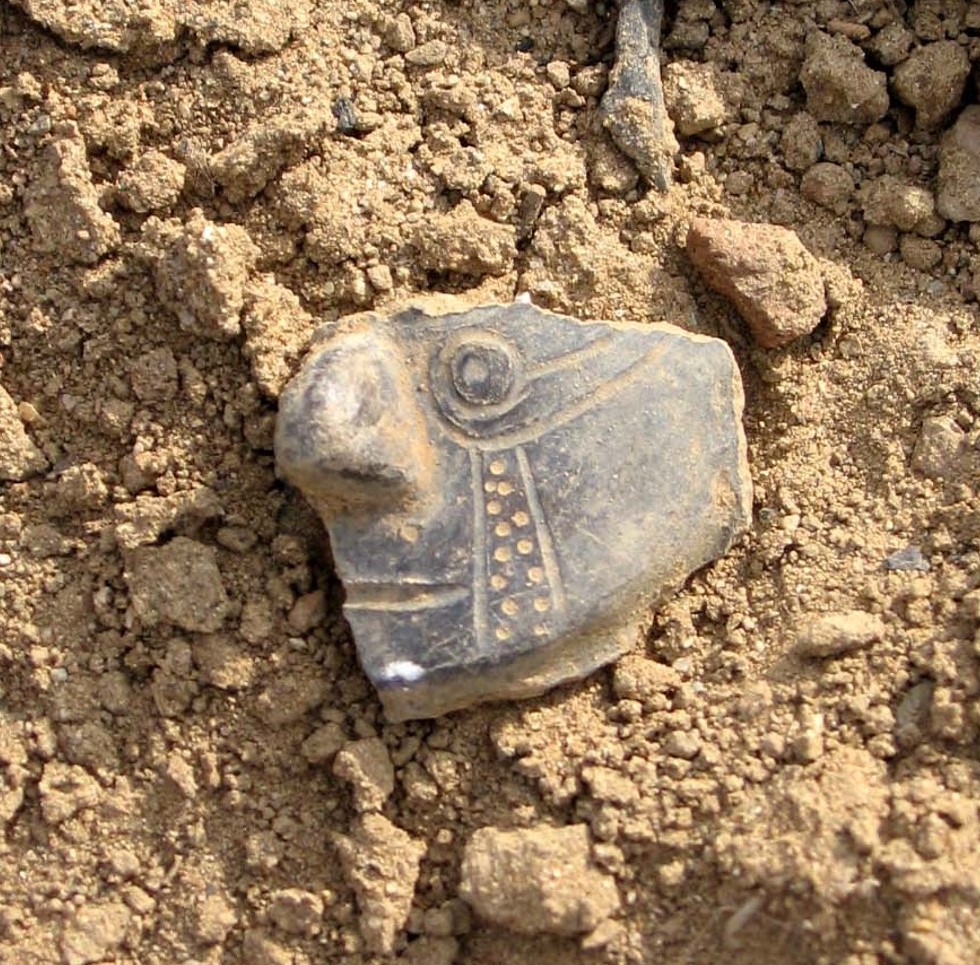
Looting, Forgery, Collectors, and the Art Market
This course explores the challenges and consequences that looting, forgery, collecting, and the art market hold for cultural heritage and our understanding of the ancient past.
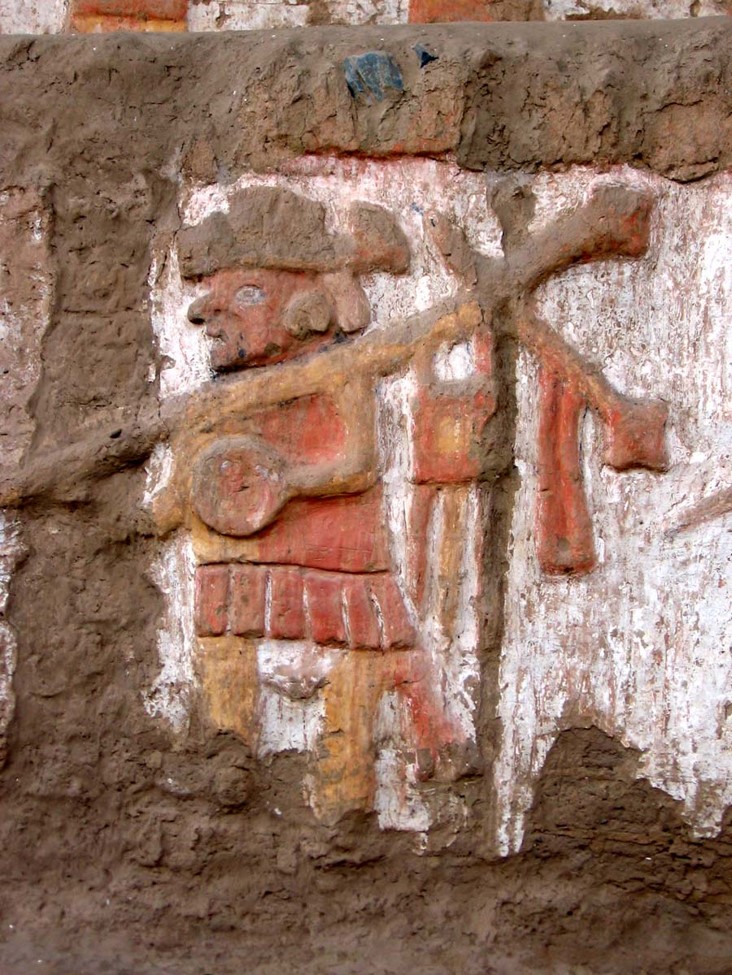
Arts of the Ancient Andes
This course explores pre-Hispanic civilizations from South America (countries including Peru, Bolivia, Chile, and Colombia) using art, architecture, artefacts, and archaeological finds to reconstruct the ancient past of cultures without text-based writing systems.
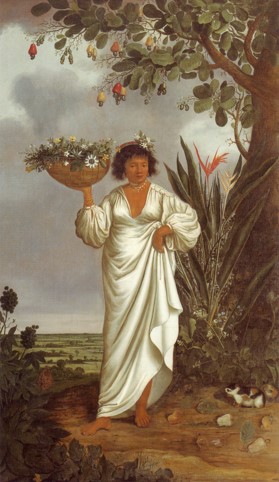
Art and Architecture of Spanish Colonial America
This course begins with the fateful encounters between native people of the Americas and the invading Spanish, and the events that followed, which resulted in a convergence of cultures, art forms, artistic styles, and religion that was neither fully European nor purely Indigenous.
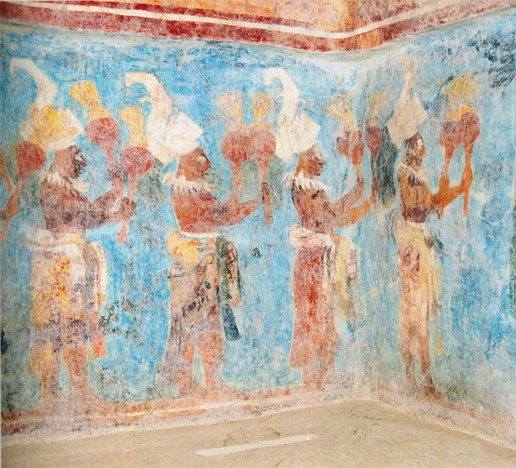
Arts of Mesoamerica
This course provides a critical and historical overview of the art and architecture of Ancient Mesoamerica, examining the artifacts, murals, sculpture, ball courts, and buildings created by Indigenous cultures living in today’s Mexico and Central America before the arrival of the Spanish in the sixteenth century.
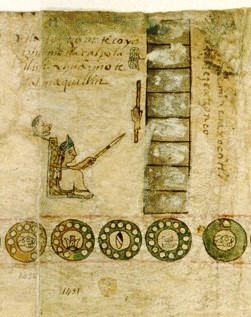
Aztec and Mixtec Manuscripts
The Aztecs and Mixtecs of ancient Mexico recorded their histories pictorially on hide, paper, and cloth. The tradition of painting history—as opposed to recording it through linear text– continued even after the Spanish Conquest. Five Pre-Columbian and some 150 early colonial painted histories survive today. This course examines a handful of these codices, using Elizabeth Boone’s Stories in Red and Black. Pictorial Histories of the Aztecs and Mixtecs as our guide.

Pictorial Manuscripts of the Andes
This course examines rare pictorial manuscripts from colonial Peru. Neither the Inca nor their ancestors had a tradition of painted books. The few that were created emerged after the Spanish conquest as a way to document Indigenous history, traditions, customs, flora, and fauna, and as a way to negotiate place in colonial society. As a class, we will study Guaman Poma’s Nueva Corónica y Buen Gobierno as well as two contemporary works attributed to Martín de Murúa. Then we fast-forward to the 18th century to explore Bishop Martínez Compañon’s encyclopedic Trujillo del Peru.
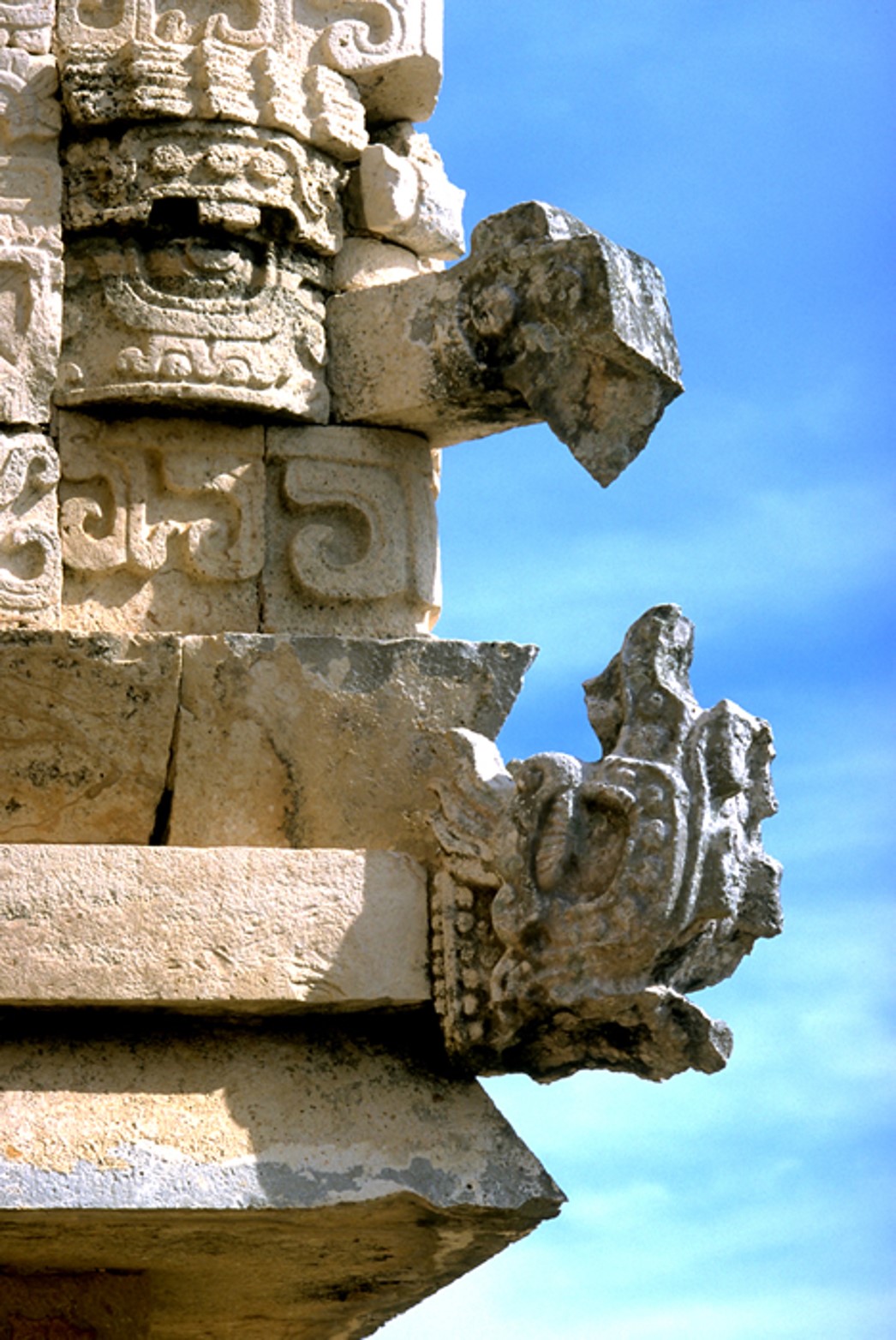
Footsteps of the Maya Explorers (study abroad to Yucatan)
This course investigates the intrepid explorers who penetrated deep jungle forests in the mid-nineteenth century in search of ancient American civilizations that could rival those of Greece, Rome, China, and Egypt. Their brave exploits paved the way for modern archaeologists, art historians, and epigraphers, whose intellectual breakthroughs include the decipherment of Maya hieroglyphs. In this course, students acquire an intellectual foundation in the classroom before traveling to the Yucatan to study Maya palaces, temples, stela, and artwork firsthand. In and around Merida, students gain an appreciation for the technological, intellectual, and artistic achievements of the ancient Maya.
Co-taught with Maya archaeologist, Dr. Kat Brown
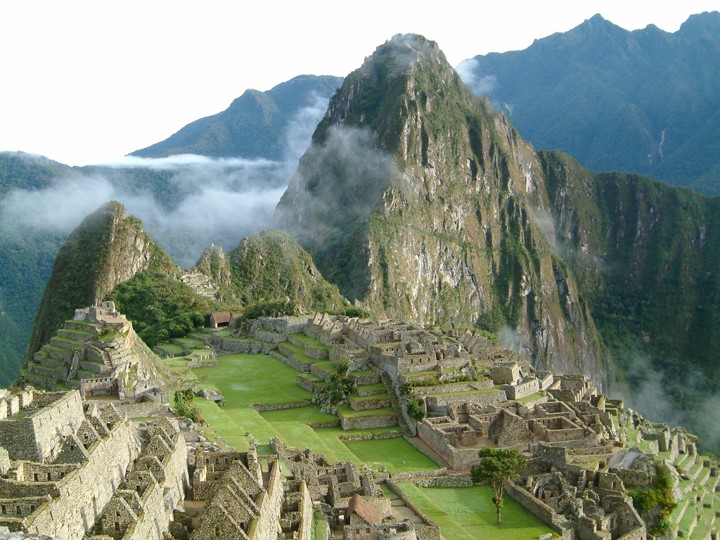
Art and Architecture of the Andes (study abroad to Peru)
This is a three week exploration of the intellectual and artistic achievements of ancient Andean artists and architects. We begin in Lima and travel up the Panamerican highway to Cerro Sechin and Chankillo, an ancient astronomical site. We continue north to Trujillo to see Moche architectural complexes and murals at Huaca de la Luna. Near Lambayeque, we visit Ventarron, home to one of the oldest murals in the Americas, and then head into the ceja de selva, Chachapoyas, to explore rock tombs in the cliffs at Revash and the site of Kuelap.

Art and Architecture of Western Europe and the New World, 14th to 18th centuries
This course examines the art, architecture, and culture of Western Europe and the New World from approximately 1348 C.E. (the year of the great plague) to roughly 1750 C.E. (the beginning of the Enlightenment). In addition to providing an overview of the objects and monuments of this period, we will examine how these objects functioned within society at the time they were created. This course will also introduce you to primary textual sources, or documents, which date to the time period we are studying.

Death, Burial, and the Body in Art
This course examines the relationship between art and death, namely the way that death and concepts of death, funerary ritual, and the corpse are depicted and addressed in art and material culture.

Art of Sacred Spaces
This course examines sacred space, and particularly the constructed forms that mark, commemorate, or reference it, as well as the landscape that lends it meaning. We will examine the ways that sacred art and architecture are informed by an underlying order that is largely shaped by the natural world.

Research Methods and Writing
This course examines the origins of the discipline of art history and its current methodologies and aims to provide students with techniques for effective research, analysis, writing, and oral presentation.
Experiential Learning, Peru
To understand the Andes, you really need to be there. In 2015, I took a group of ten university students on a two-week overland adventure up the north coast of Peru. All lived to tell the tale.
We began in the classroom, learning about the artistic, architectural, technological, and engineering feats of ancient Andean cultures, studying material culture of Chavín, Cerro Sechín, Paracas, Nasca, Moche, Recuay, Wari, and Inca.
The classroom moved to Peru, where we began in Lima, visiting the Museo Larco Herrera, the Museo Nacional, and the Museo de Arte Lima. Dinner at La Bodeguita overlooking Huaca Pucllana concluded a full first day.
Traveling on the Panamerican highway, with spectacular views of the Pacific Ocean, we made our way to Casma to see the complex of Cerro Sechin and the astronomical site of Chankillo.
Further north, in Trujillo, students walked through the painted Moche complex of Huaca de la Luna. Climatic events kept us a few extra days in Trujillo, giving students time to visit the Chimu site of Chan Chan but cutting into scheduled time in Chachapoyas. Landslides, grueling hikes from Tingo to Kuelap, and broken toes aside, we made the overnight bus from Chachapoyas to Chiclayo with just moments to spare.
The next day, in Lambayeque, brought new adventures in the painted complex of Ventarron and the Moche site of Sipan. Using the beautiful Hosteria San Roque as base camp, we explored Huaca Chotuna-Chornancap, Ferrenafe and the Museo Sican, and enjoyed coastal fare at el Pacifico.
We returned to Lima, spending a final two days amidst the splendors of the Coleccion Barbosa Stern, Lima’s cathedral, and the Museo Pedro de Osma.
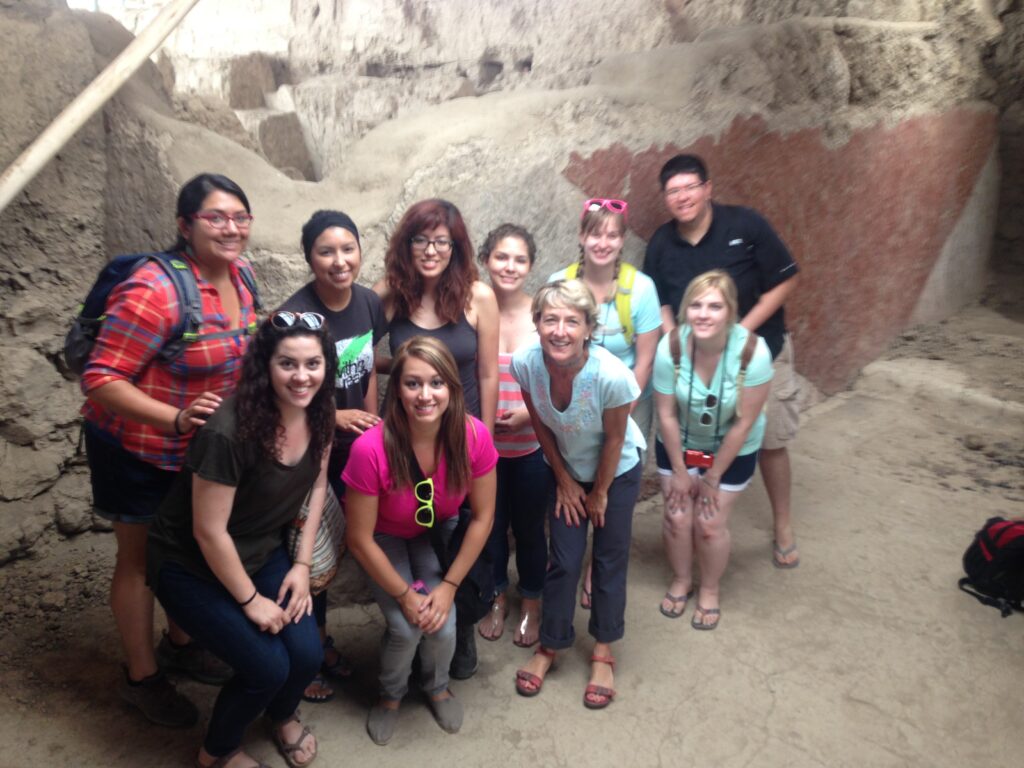
Ventarron
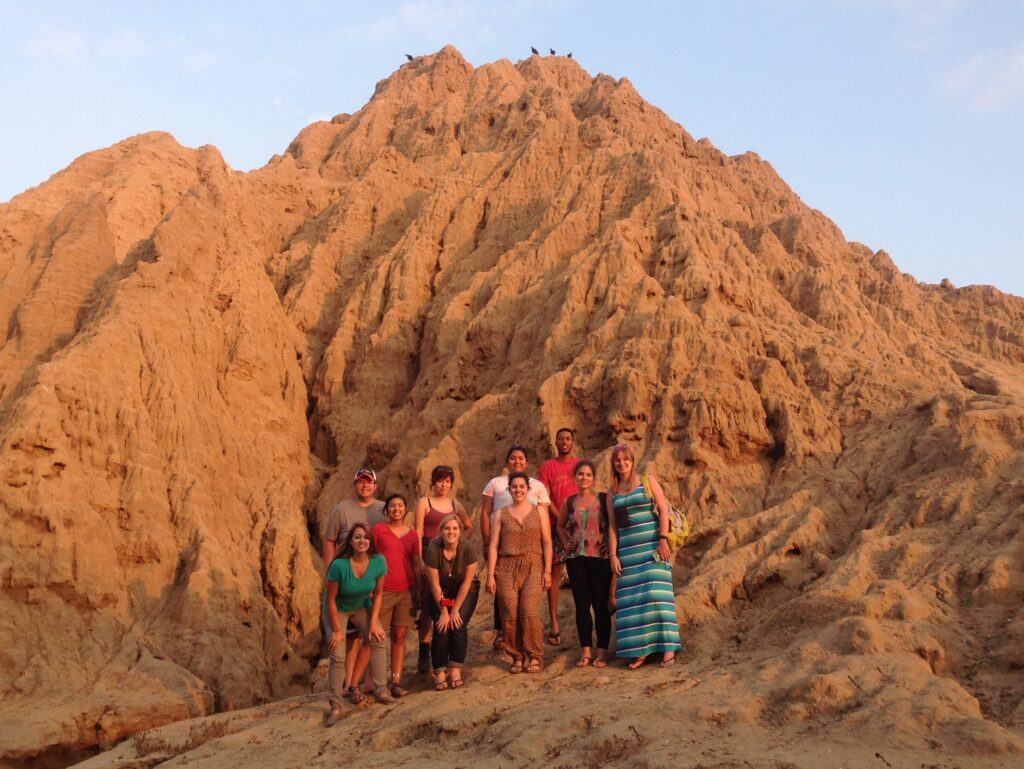
Huaca Loro
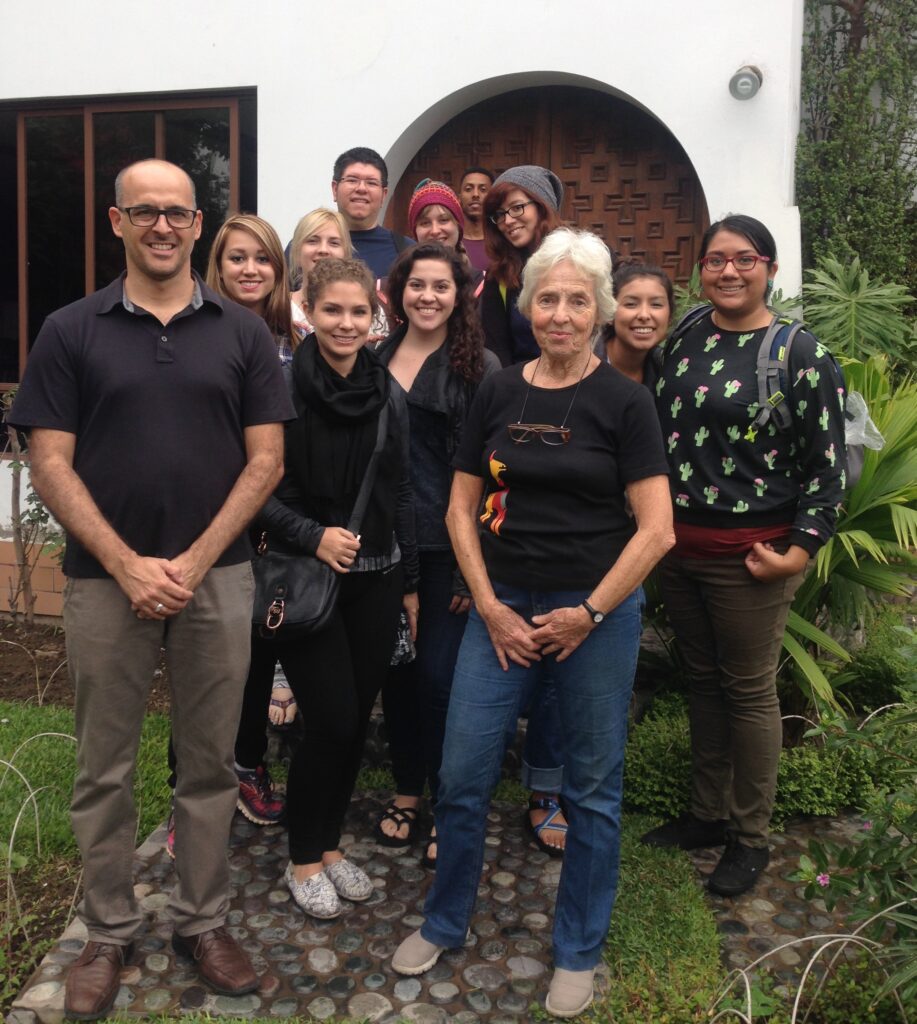
Outside the Coleccion Barbosa Stern in Lima
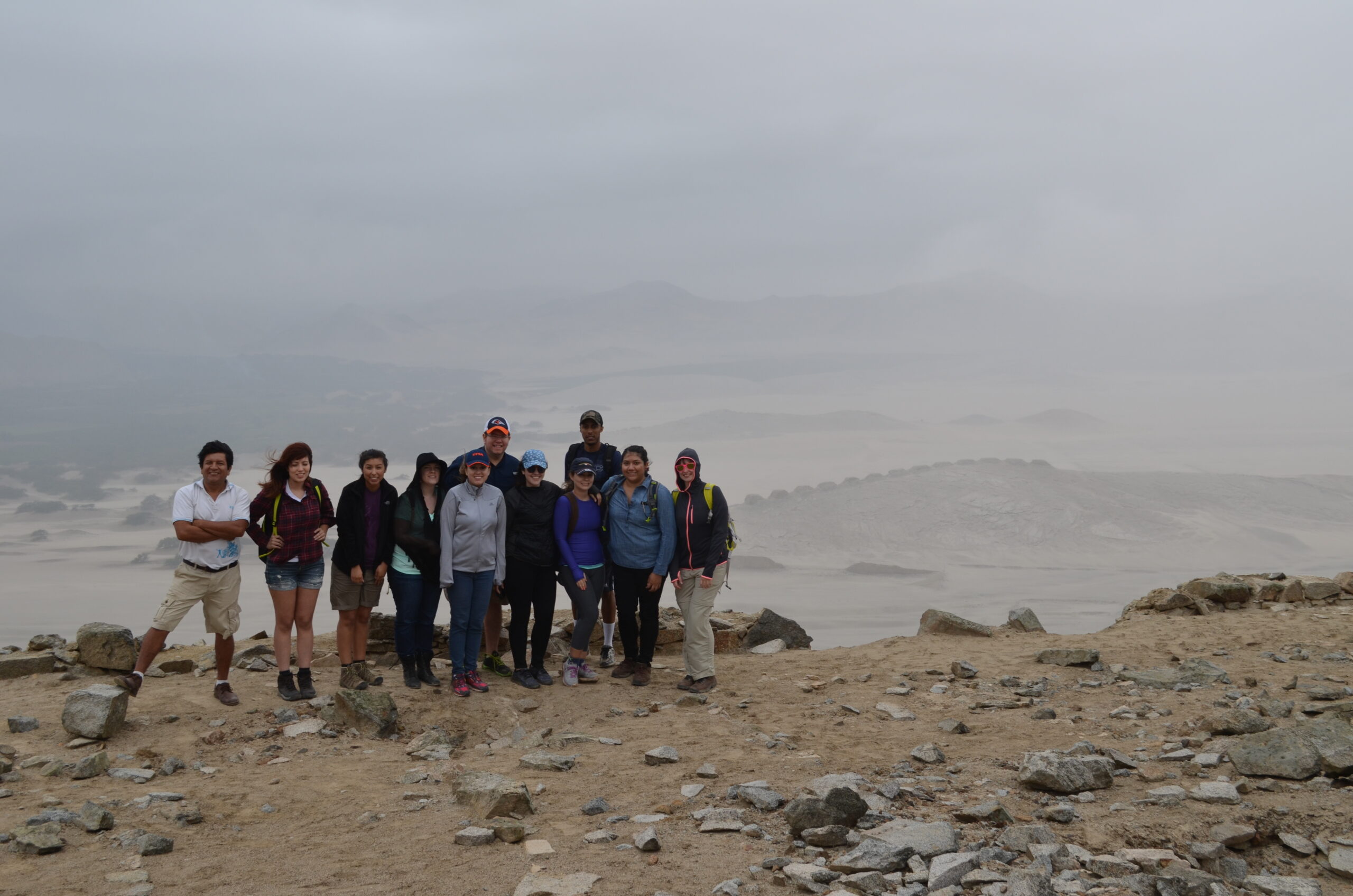
Chankillo
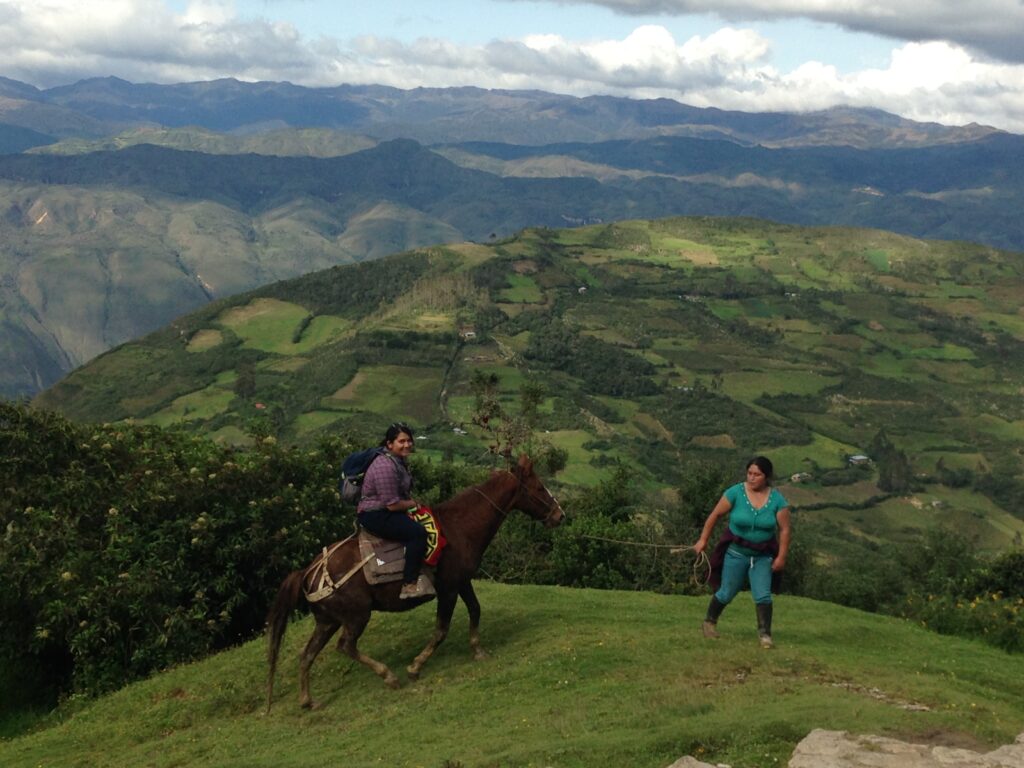
Kuelap
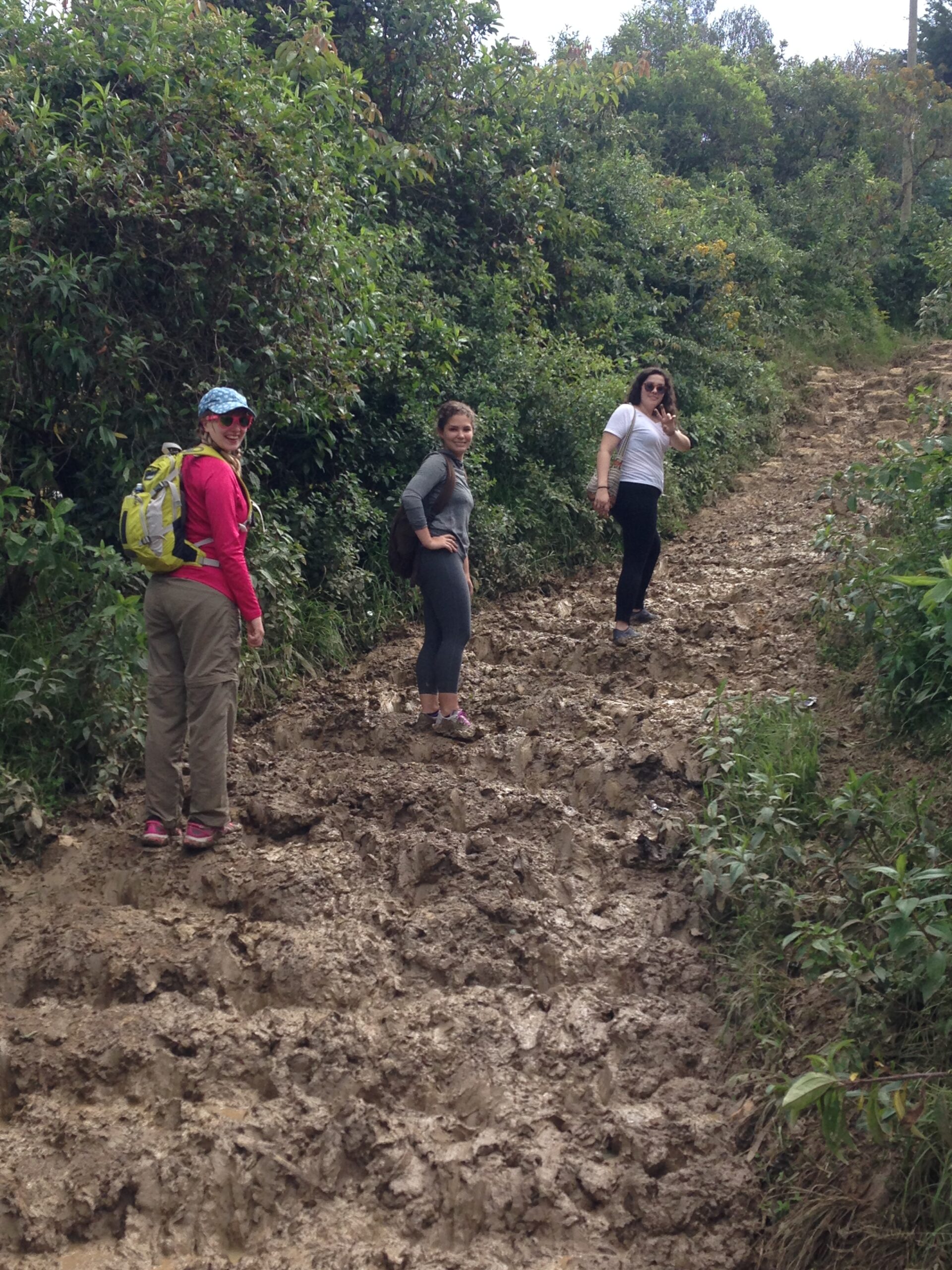
The muddy and punishing trail from
Tingo to Kuelap
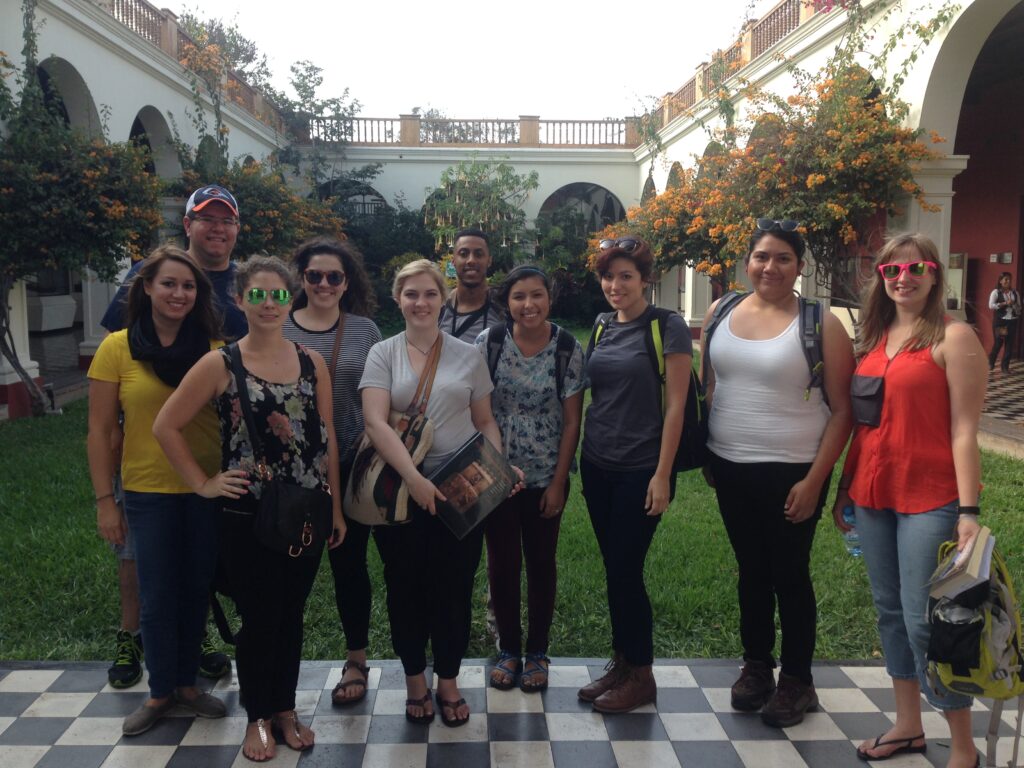
In the courtyard of the Museo Nacional in Lima
Experiential Learning, Mexico
Can a book from the mid-nineteenth century inspire students living in the twenty-first? This was the question I pondered with archaeologist Kat Brown one fall evening over a glass (or two) of rosé. The text in question was John L. Stephens Incidents of Travel in Yucatan (1843) and it turns out the answer is yes.
So began our idea to guide college students in retracing the steps of Stephens and Frederick Catherwood, who, at a time of great political turmoil, macheted their way through the dense ground cover of Yucatan discovering Maya pyramids, cenotes, and vestiges of the ancient Maya past.
The course, “In the footsteps of the early Maya explorers,” aimed to teach students about the ancient Maya through two disciplinary lenses: art history and archaeology.
The result has been three different learning adventures (2017, 2019, and 2022). Each brought together undergraduate and graduate students from a range of disciplines (art history, history, anthropology, and architecture). Many have gone on to pursue studies in archaeology, epigraphy, conservation, and environmental sustainability.
The study abroad portion of the course was based out of Merida with day trips that included visits to Mayapan, Dzibilchaltun, Chichen Itza, Ek Balam, and the Puuc sites of Kabah, Sayil, and Uxmal.
Cenotes were, of course, a highlight and included Xlacah, Homun, and Ik kil. A relaxing afternoon on the beach at Progresso was also a favorite event.
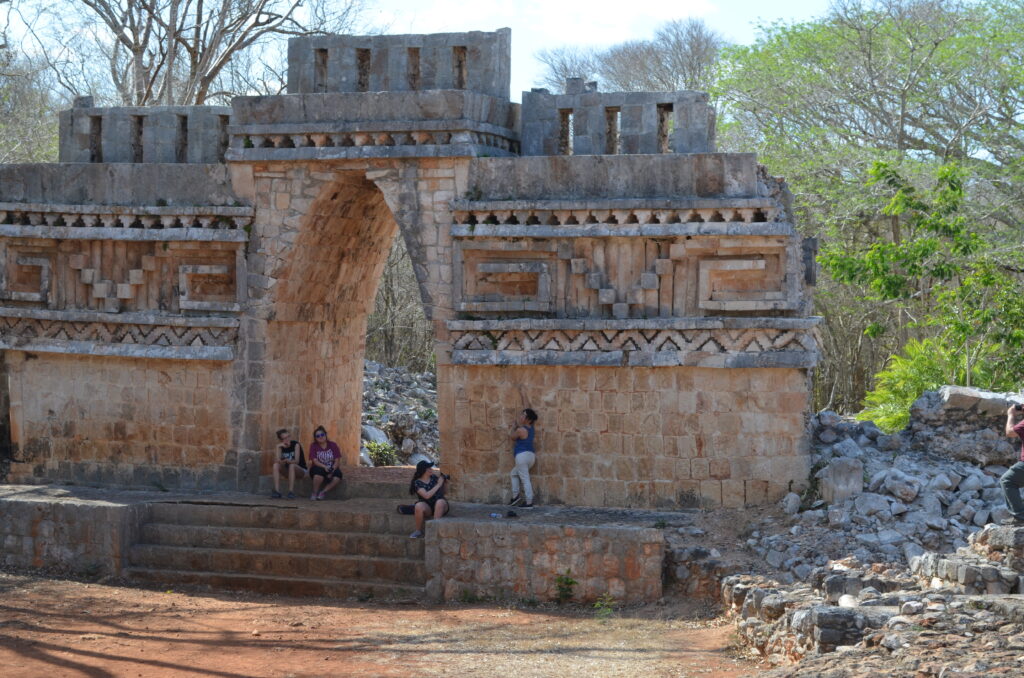
Arch at Labna
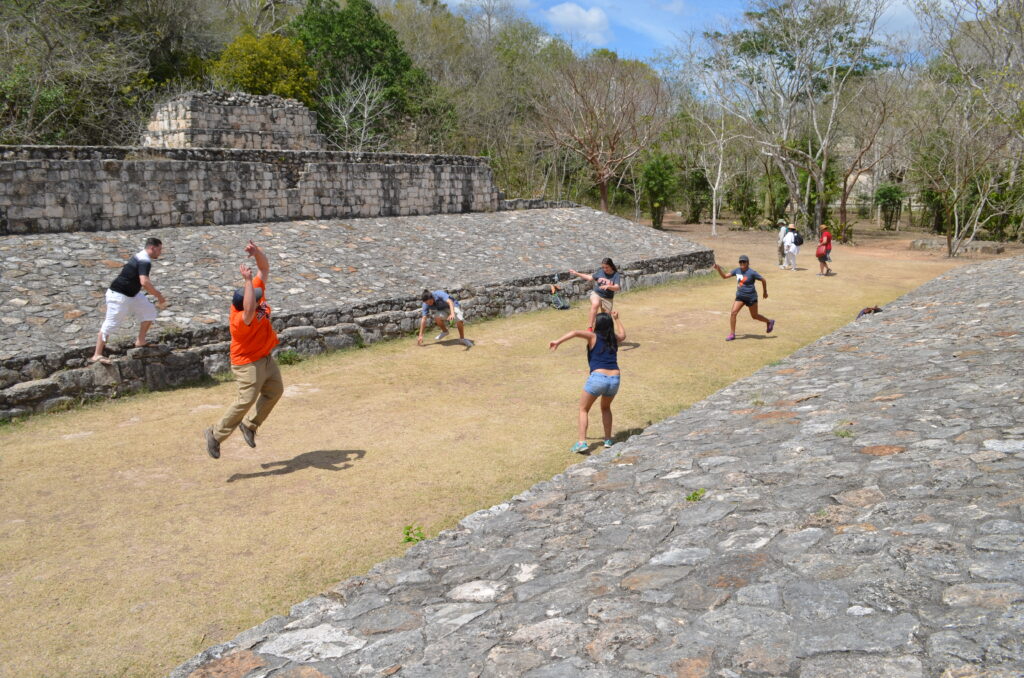
Students reenact the Maya ballgame at Ek Balam
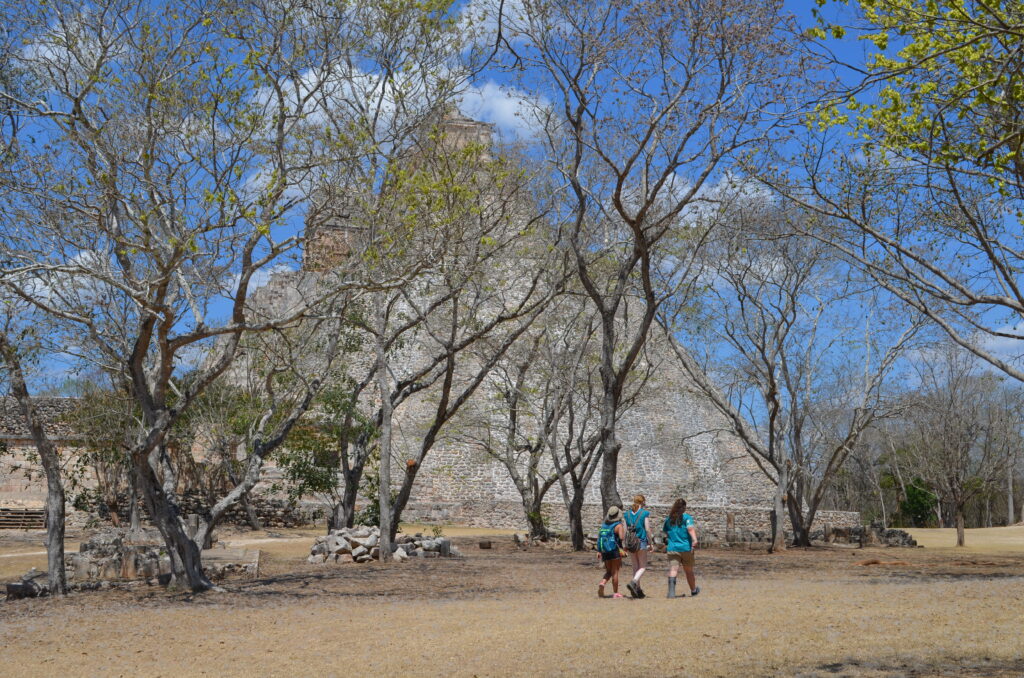
Exploring Uxmal

Sizing up Codz Poop Palace at Kabah
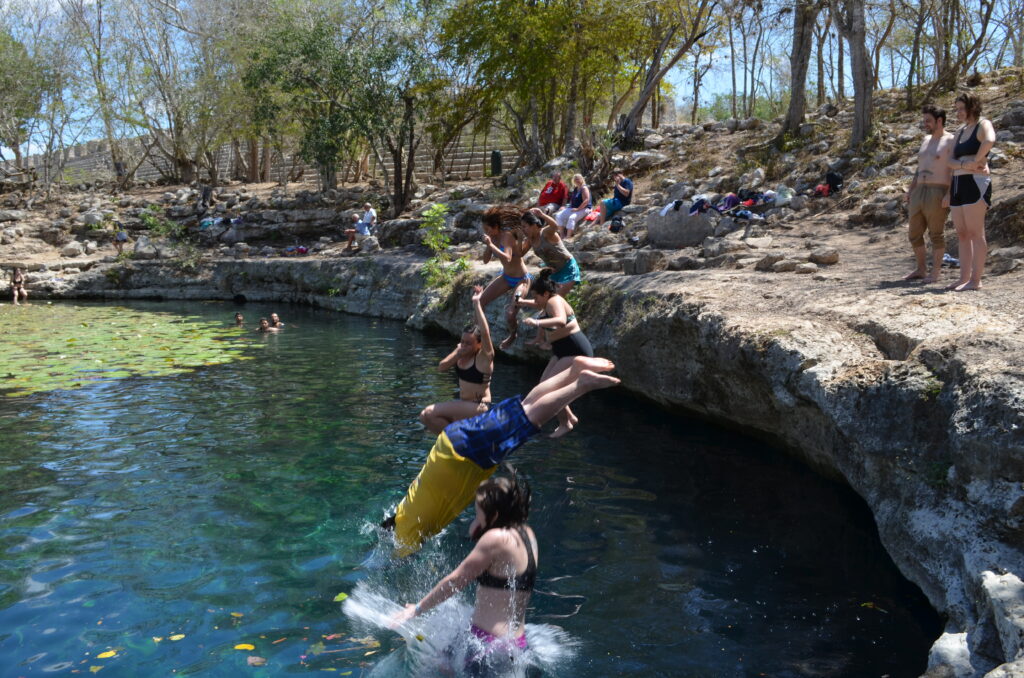
All in at cenote Xlacah at Dzibalchaltun
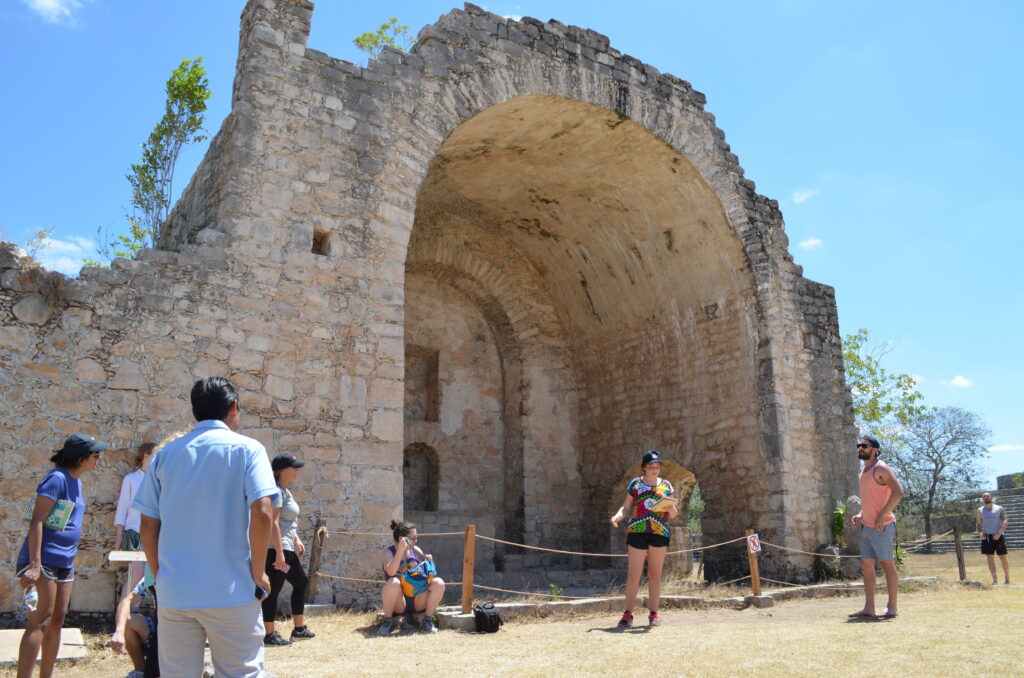
Early Spanish colonial chapel at Dzibalchaltun

Recording Maya glyphs

